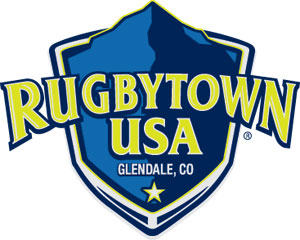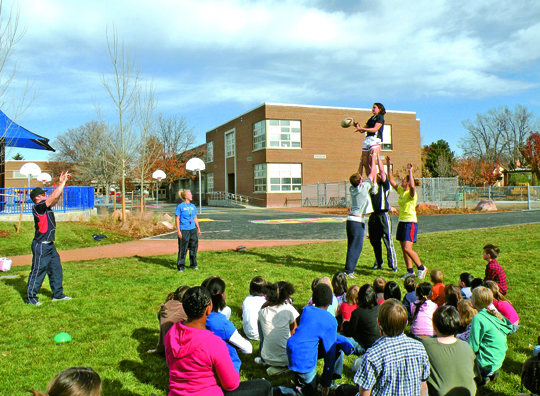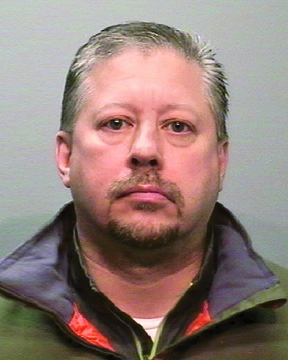
by Mark Smiley | Jan 30, 2017 | Glendale City News
by John Arthur
Writer for and on behalf of the City of Glendale
Since the club’s founding more than a decade ago, the Glendale Raptors have been a pillar of community involvement, most notably through their extensive involvement with Glendale youth. Raptors team members and coaches spend time volunteering at Children’s Hospital every year, offer free and low-cost youth rugby clinics and programs, as well as a Rugby Academy where local youth can build rugby skills from kindergarten all the way to the professional level. The Raptors’ commitment to involvement with Glendale is an especially important aspect of the club’s overall mission, and not simply because it engages young people with positive mentors and promotes fun and fitness. Youth rugby programs have the added benefit of increasing awareness for the fastest growing sport in the United States, creating a new generation of players, coaches, and fans.
 One of the most successful youth programs in 2016 was Rugby in the Schools, an offering spearheaded by Raptors Youth Programs Coordinator Jenna Anderson. Rugby in the Schools introduces the game through Rookie Rugby, a non-contact, educational format, specifically designed for presentations and instruction in school PE classes. Playing games and running drills, Anderson, alongside Raptors players and staff, introduces local schools to rugby’s inclusive nature, ensuring every child participates for the entire program period. Because rugby is often unfamiliar to local youth, everyone starts on an even playing field; as Anderson puts it: “We go in and it’s a clean slate. Everyone participates. Everyone is interested and every single child plays. Learning something new, as a group, is really important and really special.” Students experience the fun and excitement of rugby, as well as the importance of inclusion and good sportsmanship.
One of the most successful youth programs in 2016 was Rugby in the Schools, an offering spearheaded by Raptors Youth Programs Coordinator Jenna Anderson. Rugby in the Schools introduces the game through Rookie Rugby, a non-contact, educational format, specifically designed for presentations and instruction in school PE classes. Playing games and running drills, Anderson, alongside Raptors players and staff, introduces local schools to rugby’s inclusive nature, ensuring every child participates for the entire program period. Because rugby is often unfamiliar to local youth, everyone starts on an even playing field; as Anderson puts it: “We go in and it’s a clean slate. Everyone participates. Everyone is interested and every single child plays. Learning something new, as a group, is really important and really special.” Students experience the fun and excitement of rugby, as well as the importance of inclusion and good sportsmanship.
Anderson has led youth programming for the nine years since being brought into the Raptors club in 2008, but notes that 2016 was an especially busy year. The Raptors worked with 16 different local schools, and also held eight separate sessions elsewhere, including clinics at Glendale’s Infinity Park and for local nonprofits, as well as field days at local summer camps. According to Anderson, “2016 has really taken off. Teachers have shown a lot of interest in having rugby as part of their curriculum.” In addition to the host of benefits Rookie Rugby offers participating schools and students, the programming is and always has been entirely free of charge.
Rugby in the Schools is focused on communities surrounding Glendale, although dem and exists all along the Front Range. In 2016, Anderson and the Raptors were a presence across metropolitan Denver, in both public and private institutions, though she admits the popularity of Rugby in the Schools has forced her to turn down requests from institutions located outside of the metro area. Working in physical education classrooms from kindergarten through 8th grade, she and players from the Raptors Men’s, Women’s, and Under-20 teams interacted with as many as 500 students per school. Engaging every interested student at each school, Anderson and her assistant volunteers spent between one and four days per location completing programming.
and exists all along the Front Range. In 2016, Anderson and the Raptors were a presence across metropolitan Denver, in both public and private institutions, though she admits the popularity of Rugby in the Schools has forced her to turn down requests from institutions located outside of the metro area. Working in physical education classrooms from kindergarten through 8th grade, she and players from the Raptors Men’s, Women’s, and Under-20 teams interacted with as many as 500 students per school. Engaging every interested student at each school, Anderson and her assistant volunteers spent between one and four days per location completing programming.
It’s difficult to point to any one reason why Raptors youth rugby programs blossomed in 2016. Clearly there are significant benefits for both the young participants and the schools they attend, but there is also something more. Rugby’s meteoric rise in popularity stateside in the last several years has been incredible, with Glendale at the epicenter of the sport in the United States. The reemergence of rugby in the 2016 Olympic games, combined with the Raptors’ successes on and off the pitch, have played a role as well. What is clear is that rugby is, in Glendale and the rest of the country, a sport that’s here to stay — and one that players and fans of all ages take great pride in.
Asked about her favorite part of Rugby in the Schools, Anderson says, “I love going and seeing kids who already play for the Raptors. They know we’re coming and they wear their Raptors shirts and it’s obvious that they’re really proud to be rugby players. It’s wonderful to see kids passionate about the sport.” The growth of rugby’s popularity in the United States shows no signs of slowing, and the work that Anderson and the Raptors are doing in community classrooms demonstrates that the next generation of players and fans is here to stay as well.

by Mark Smiley | Jan 30, 2017 | Feature Story Bottom Left
by Ruthy Wexler
Early in the morning of October 19, Hilltop resident Denise Gibbons observed city workers removing the 2-hour parking limit signs from her street. Alerted, neighbor Joanne Davidson dashed out to inspect the 500 blocks of Albion, Ash, Bellaire and Birch, only to discover that every single 2-hou r parking limit sign was gone.
r parking limit sign was gone.
Two months before, residents had received a letter, dated August 8, 2016: “Parking Operations has determined that it is appropriate to remove existing 2-hour restrictions [in Hilltop neighborhood] ….”
But since the letter concluded, “We encourage all households to provide feedback in support of or in opposition of [sic] the proposed time changes,” residents thought they could make their case.
“I don’t know for sure how many people communicated their displeasure but every last one … on my street did,” Davidson said. Lee Johnson drafted a petition to keep the signs in place; everyone on his block signed it. “It strikes me,” Johnson wrote, “that unanimous opposition … should be given significant weight.”
Residents believed the city was open to their input and might be willing to reverse their decision to remove the signs. However, they soon learned that the city was unwilling
The 2-hour parking limit signs were installed in the Hilltop area in the early 1990s, when inadequate parking at the University of Colorado Health Sciences campus at 9th and Colorado, plus their policy of charging employees to park, caused increasing numbers to seek out residential streets.
“We were a parking lot for the hospital,” recalled Joan French, who has lived in Hilltop for 44 years. “It was a nightmare.” One resident recalled asking a driver to park closer to the curb; the young man yelled, “I’m late to class!” A doctor, answering an emergency call, had to drive over her own lawn when a strange car blocked her driveway. Residents routinely called police to tow cars.

Renderings of the 9th and Colorado property. Photos provided by Continuum Partners, LLC
For almost 25 years, Hilltop felt protected by the signs. Now, they asked Councilwoman Mary Beth Susman to convene a meeting. On Nov. 29, three representatives from Parking Operations, Alyssa Alt, Sean Mackin and Cynthia Patton met with approximately 20 residents (many still away for Thanksgiving) and explained that according to their studies, the neighborhood did not exhibit 75% occupancy of parking spaces, the criterion for adding parking restrictions. (“The study was done when the signs were still in place!” French exclaimed.) And since CU Hospital complex had moved to Aurora, there were no longer “parking impacts” from the 9th and Colorado site.
But something new was being built on that 26-acre site, residents pointed out — a development containing shops, apartments, parks and restaurants. Until the effects of the complex were seen, couldn’t the signs stay in place? The cost of enforcing them is too expensive, said the parking people. Residents suggested just keeping the signs, not monitoring them. No, Patton said, but assured residents that the signs, if needed, could be easily reinstalled since workers removed only the center posts.
Susman, who lives in Hilltop, believes that Parking Operations would reinstall the signs if warranted. “Neighbors panicked when the signs went down,” she said. “I understand the fear, we lived with Colorado University Health Sciences Campus … but I don’t think it’s necessary now.”
“At that meeting, we were basically told our feelings didn’t count,” said Davidson, who felt, with others, that communication had broken down. The August 8 letter stated that residents had requested the signs’ removal, which many found hard to believe. Davidson surveyed numerous neighbors “and not one said they wanted the signs gone.” Joan French heard that Parking Operations claimed the principals of the area’s two schools, Streck Elementary and Hill Junior High, had requested the signs’ removal; Parking Operations denied they ever said that. Nancy Kuhn, Communications Director for Denver Public Works, explained that the office had been in touch with the schools only to help manage traffic overflow. Hearing a rumor that paid parking would be installed in the new development, unsettled residents wondered: is the developer involved?
“I’m very surprised at that question,” said Frank Cannon, of Continuum LLC, the firm in charge of the 9th and Colorado project. “Of course not. … The idea that any discussion about parking is going on behind closed doors to remove signs I didn’t even know about is disheartening to me as a developer. I’ve made extensive efforts to reach out to the community.
“Do we have adequate parking? Absolutely, for every square foot,” Cannon stated. “We’ll have metered parking along the streets inside our development. We’ll have more than 2,500 off-street spaces all in garages.”
Asked whether customers or workers will pay to park in the garages, Cannon said, “At this point, we are not assuming paid parking.”
The new development is not the only reason residents want the signs back. The quiet streets of Hilltop are surrounded by urban growth. Lee Johnson explained, “The 2-hour restrictions [in Hilltop] provided ample parking for people coming and going to the nearby schools … an appropriate balance of the needs of individuals to park [with] the desire to reduce long-term parking, with its attendant concerns about traffic and safety, in a residential neighborhood.”
Kuhn pointed out that Parking Operations has a wide range of responsibilities. “We work to adjust or remove restrictions so that on-street parking, a valuable public asset, is available for users.” She added, “Once redevelopment has occurred at [9th and Colorado], we’ll have a better sense … what management strategies are needed.”
In this tug of war between rigid formulas and subjective experience, Hilltop residents offer what they feel is common sense. “They said it was a big cost to enforce the restrictions,” French said, “but when one considers how much money has been spent on meetings, postage, crews to remove the signs …”
Protecting the neighborhood is a win/ win, residents feel. “If cars start parking every which way like they used to, property values go down and the City stands to lose,” said French. “The City should be leading the charge for historical preservation and maintaining our neighborhood’s integrity.
“I believe it is very short-sighted of the City to take those 2-hour signs down,” French said. “It would cost nothing to keep them in place.”

by Mark Smiley | Jan 30, 2017 | Feature Story Middle Left
by Mark Smiley
 The phony private investigator from Tennessee, Charles Johnson, who apparently works in some capacity for the Denver Office of the Federal Bureau of Investigation was issued a formal Cease and Desist Order from Colorado Department of Regulatory Agencies prohibiting him from engaging in certain illegal actions in Colorado. The Order is seen as a slap in the face of the Denver FBI who apparently hired him to harass individuals who had been given negative comments in local newspapers about Mohammad Ali Kheirkhahi and M.A.K. Investments LLC (M.A.K.) regarding their plans to build a skyscraper high-density apartment house on Colorado Boulevard.
The phony private investigator from Tennessee, Charles Johnson, who apparently works in some capacity for the Denver Office of the Federal Bureau of Investigation was issued a formal Cease and Desist Order from Colorado Department of Regulatory Agencies prohibiting him from engaging in certain illegal actions in Colorado. The Order is seen as a slap in the face of the Denver FBI who apparently hired him to harass individuals who had been given negative comments in local newspapers about Mohammad Ali Kheirkhahi and M.A.K. Investments LLC (M.A.K.) regarding their plans to build a skyscraper high-density apartment house on Colorado Boulevard.

 Johnson was charged with a crime of attempting to act as a private investigator in Colorado without a license. At the time of his arrest Johnson was caught with current driver’s licenses from three different states which could be subject to potential additional criminal charges along with various other complaints of criminal harassment, including one from Glendale’s City Clerk whose apartment complex Johnson attempted to gain access to.
Johnson was charged with a crime of attempting to act as a private investigator in Colorado without a license. At the time of his arrest Johnson was caught with current driver’s licenses from three different states which could be subject to potential additional criminal charges along with various other complaints of criminal harassment, including one from Glendale’s City Clerk whose apartment complex Johnson attempted to gain access to.
It was widely assumed that Johnson worked for Kheirkhahi, M.A.K. or their agents. He told the Glendale Police that he was working for an “individual female writer/journalist in the area” who he refused to disclose. The description appeared to fit M.A.K. advocate Jeanne Price, but she adamantly denied she had hired him as did M.A.K. Shockingly the Denver FBI, prior to Johnson’s first court appearance, demanded that Arapahoe County District Attorney George Brauchler dismiss all charges and quash all warrants against Johnson for “reasons that could not be disclosed.”
D.A. Brauchler refused to do so unless given a letter on FBI letterhead signed by the Agent in Charge of the Denver Office Thomas P. Ravenelle. Brauchler quickly made the letter public by attaching it to the “Motion to Quash Outstanding Warrants” and the letter was published in the Glendale Cherry Creek Chronicle’s June 2016 edition to the apparent consternation of Ravenelle. The Denver FBI has a badly tarnished reputation in Colorado concerning its use of agent provocateurs engaging in criminal conduct while under the office’s pay control, including Scott Lee Kimball who tortured and murdered as many as 17 women in Colorado.
Ravenelle already had a lurid public persona as the result of a civil cas e against FBI Director James Comey for gross sexual misconduct and harassment by Ravenelle and others filed by female FBI agent Danielle Marks. Ravenelle was removed from his position as Agent in Charge in Denver and given a clerical job in Washington, D.C., in July of last year. FBI head Comey himself is under Department of Justice investigation concerning his role in allegedly unlawfully interfering in the 2016 Presidential Election.
e against FBI Director James Comey for gross sexual misconduct and harassment by Ravenelle and others filed by female FBI agent Danielle Marks. Ravenelle was removed from his position as Agent in Charge in Denver and given a clerical job in Washington, D.C., in July of last year. FBI head Comey himself is under Department of Justice investigation concerning his role in allegedly unlawfully interfering in the 2016 Presidential Election.
DORA was apparently not cowed by the FBI claims of immunity for criminal state actions in Colorado and the State Director defiantly issued the Cease and Desist Order notwithstanding any pressure the FBI may have brought to bear. The FBI refused to answer whether it would in fact obey the DORA order and cause its employee and/ or contractor Johnson to follow the laws of the State of Colorado regarding its licensing provisions or otherwise.

 One of the most successful youth programs in 2016 was Rugby in the Schools, an offering spearheaded by Raptors Youth Programs Coordinator Jenna Anderson. Rugby in the Schools introduces the game through Rookie Rugby, a non-contact, educational format, specifically designed for presentations and instruction in school PE classes. Playing games and running drills, Anderson, alongside Raptors players and staff, introduces local schools to rugby’s inclusive nature, ensuring every child participates for the entire program period. Because rugby is often unfamiliar to local youth, everyone starts on an even playing field; as Anderson puts it: “We go in and it’s a clean slate. Everyone participates. Everyone is interested and every single child plays. Learning something new, as a group, is really important and really special.” Students experience the fun and excitement of rugby, as well as the importance of inclusion and good sportsmanship.
One of the most successful youth programs in 2016 was Rugby in the Schools, an offering spearheaded by Raptors Youth Programs Coordinator Jenna Anderson. Rugby in the Schools introduces the game through Rookie Rugby, a non-contact, educational format, specifically designed for presentations and instruction in school PE classes. Playing games and running drills, Anderson, alongside Raptors players and staff, introduces local schools to rugby’s inclusive nature, ensuring every child participates for the entire program period. Because rugby is often unfamiliar to local youth, everyone starts on an even playing field; as Anderson puts it: “We go in and it’s a clean slate. Everyone participates. Everyone is interested and every single child plays. Learning something new, as a group, is really important and really special.” Students experience the fun and excitement of rugby, as well as the importance of inclusion and good sportsmanship. and exists all along the Front Range. In 2016, Anderson and the Raptors were a presence across metropolitan Denver, in both public and private institutions, though she admits the popularity of Rugby in the Schools has forced her to turn down requests from institutions located outside of the metro area. Working in physical education classrooms from kindergarten through 8th grade, she and players from the Raptors Men’s, Women’s, and Under-20 teams interacted with as many as 500 students per school. Engaging every interested student at each school, Anderson and her assistant volunteers spent between one and four days per location completing programming.
and exists all along the Front Range. In 2016, Anderson and the Raptors were a presence across metropolitan Denver, in both public and private institutions, though she admits the popularity of Rugby in the Schools has forced her to turn down requests from institutions located outside of the metro area. Working in physical education classrooms from kindergarten through 8th grade, she and players from the Raptors Men’s, Women’s, and Under-20 teams interacted with as many as 500 students per school. Engaging every interested student at each school, Anderson and her assistant volunteers spent between one and four days per location completing programming.







